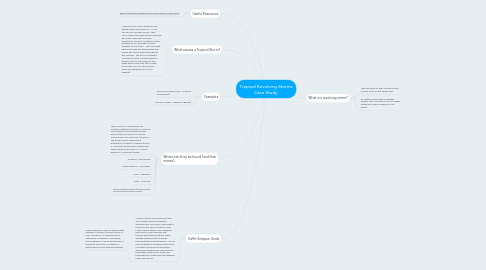Tropical Revolving Storms Case Study.
by Sam Walton


1. What is a revolving storm?
1.1. They are spun on their journey by the Coriolis force of the Earth’s spin
1.2. An intense low pressure weather system, that can last for days to weeks within the Tropical regions of our planet.
2. Where can they be found (and their names).
2.1. They all occur in a band that lies roughly between the tropics of Cancer and Capricorn and despite varying wind speeds are ferocious storms. Some storms can form just outside of the tropics, but in general the distribution (location) of these storms is controlled by the places where sea temperatures rise above 27°C and is heated to a sufficient depth.
2.2. Australia - Willy willies
2.3. North America - Hurricanes
2.4. Asia - Typhoons
2.5. India - Cyclones
2.6. The Harshest Tropical storms can be found in the Western Pacific.
3. Saffir-Simpson Scale
3.1. Tropical storms are defined by their wind speeds and the potential damage they can cause, using what is known as the Saffir Simpson scale. Many tropical storms form between the tropics, some develop into tropical depressions but not many actually develop into full blown hurricanes/cyclones/typhoons. As the sea temperature increases uplift of air increases and pressure decreases. The Saffir Simpson also accounts for the height of the storm surge, the huge waves of water that are whipped up by the storms.
3.1.1. Wind speeds are used to decide what category of storm a tropical storm is, over 120Kph or 74 mile per hour is needed for a category 1 hurricane, Over 250Kph or 149 miles per hour is the worst hurricane, a category 5 which would cause extreme damage.

